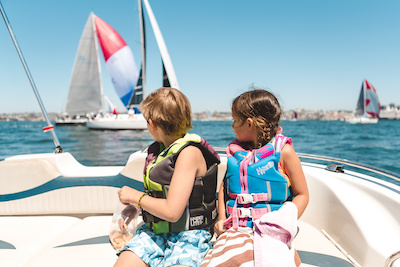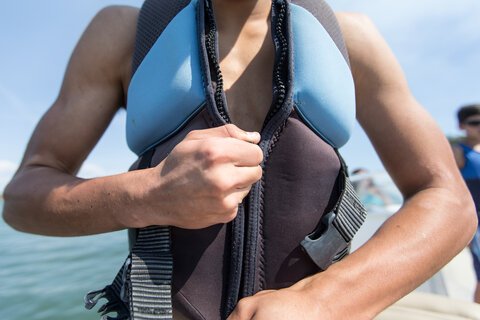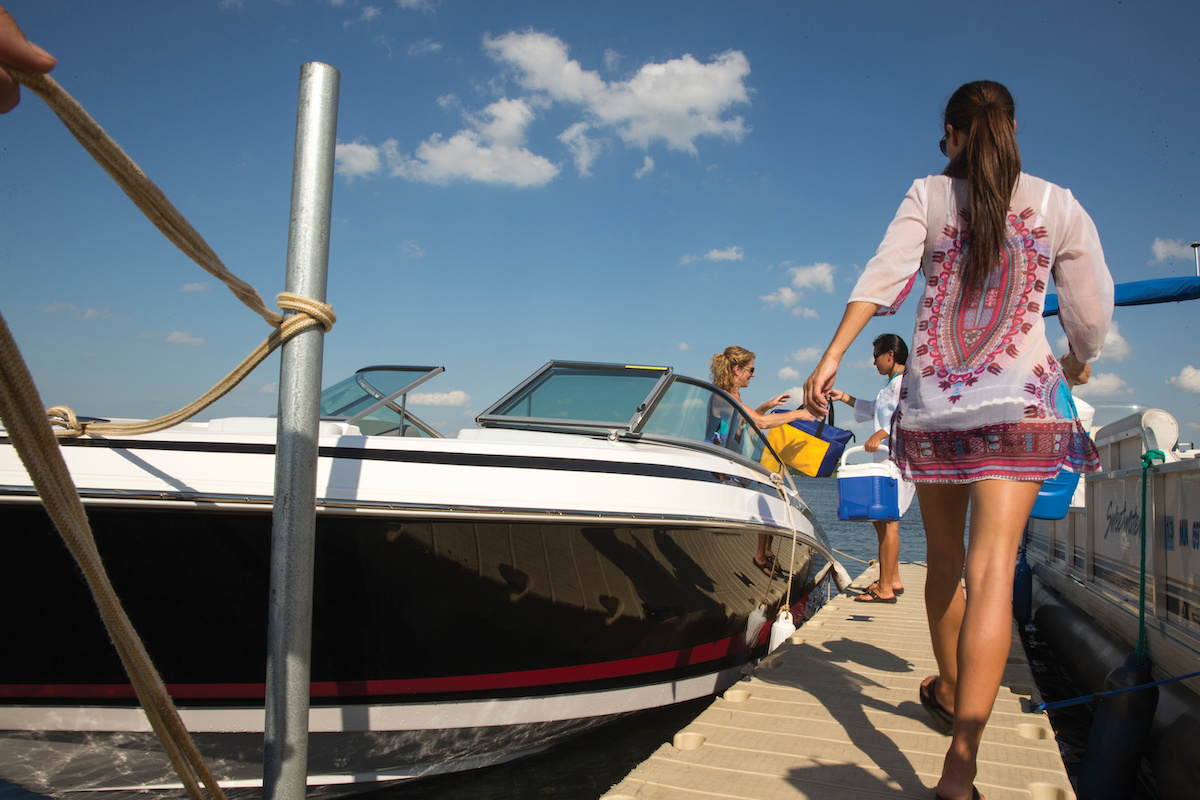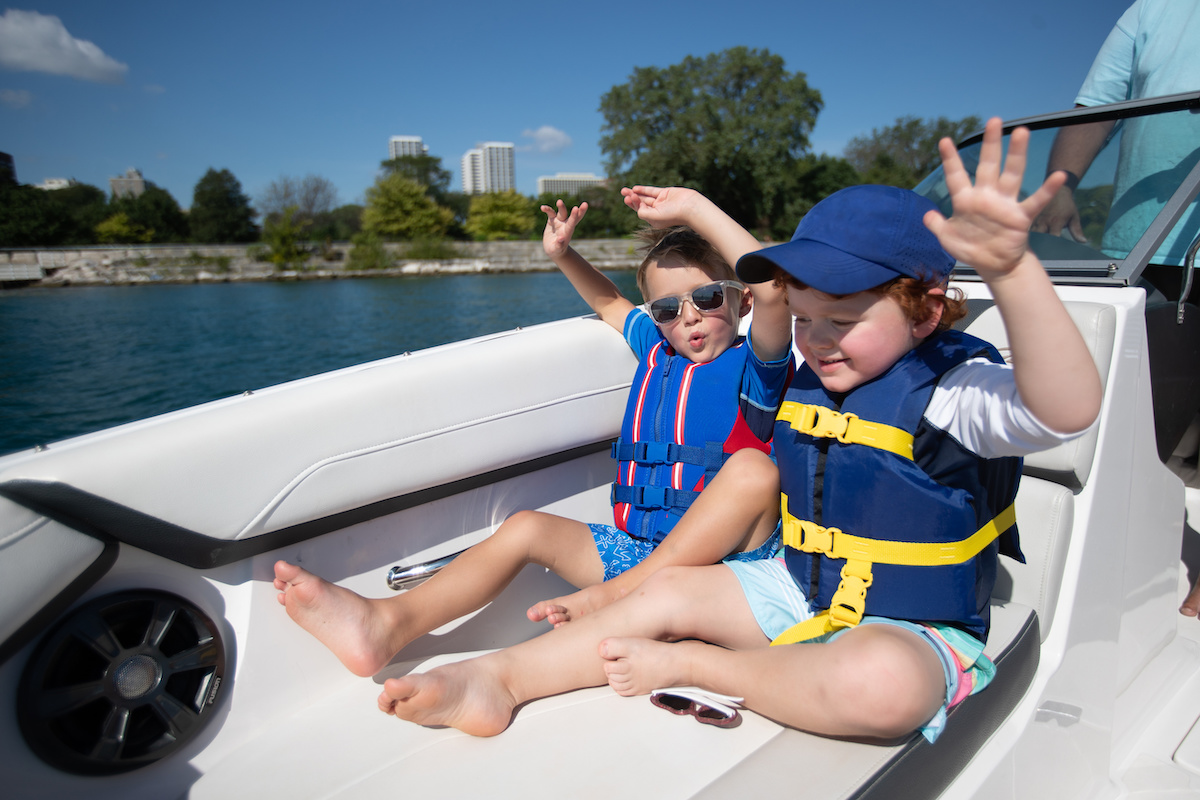Life jackets, life vests, ski vests—these are all common names for PFDs, or personal flotation devices. Whether you're cruising with the family or heading offshore for serious adventure, wearing the right life jacket can make all the difference.
Why Every Boater Needs a Life Jacket
Drowning is the leading cause of death in boating accidents. Even strong swimmers can be overwhelmed by unexpected conditions like cold water, currents, or fatigue. A U.S. Coast Guard-approved life jacket helps keep your head above water and provides vital flotation when you need it most.
It can buy you the time and energy needed for rescue in rough conditions or emergencies. Every recreational boat in the U.S. must have a properly fitting, USCG-approved life jacket for each person on board.
Life Jacket Classifications
Until recently, life jackets in the U.S. were categorized using a Type I through Type V system.
While still in circulation, that model is being phased out in favor of a new, performance-based labeling system introduced by the U.S. Coast Guard. These new labels are easy to understand and align with international standards.
Under the new classification, life jackets include performance levels like Level 50, 70, 100, 150, or 275. These numbers refer to the amount of buoyancy the jacket provides, measured in Newtons.
For example, a Level 70 is commonly used for near-shore and inland water activities with help nearby. A Level 100 or 275 is better suited for offshore use as it's more buoyant and designed to keep the wearer face up.
This system helps users select the right one for their boating activity and environment more easily.
When in doubt, check the label. The jacket's label will offer clear information on its intended use, like water skiing or powerboating.
How to Choose the Right Life Jacket
The best life jacket is the one that matches your activity, fits properly, and meets U.S. Coast Guard approval.
If you're paddling a kayak, a low-profile, flexible vest that allows freedom of movement will be more comfortable. For open-water boating, inflatable or higher-buoyancy life jackets offer stronger performance in rougher conditions.
Look at the label to confirm that the jacket is Coast Guard-approved and appropriate for your activity and body type. Make your decision based on where you'll be boating, how far you'll be from shore, and what weather or water conditions you might face.
Fit is Non-Negotiable
Fit is one of the most critical aspects of life jacket safety. A life jacket that's too loose could slip off, while one that's too tight could impair your breathing or movement.
To check for proper fit, read the label to verify it's the right size for your height and weight. The label may also designate if it's sized for children, youth, or adults.
Fasten all straps, buckles, and zippers, then lift your arms overhead. If the jacket rides up above the chin or face, it's too large. If it's uncomfortable to breathe, it's too tight.
Kids' life jackets include additional safety features like a crotch strap and sometimes head support. For children, always use the crotch strap to keep the jacket secure. Kids grow fast, so check the fit often.
When possible, test the fit in calm, shallow water. A properly fitted life jacket should allow you to float comfortably with your mouth and nose well above the surface.
Learn more about life jackets in our latest safety video:
Know the Legal Requirements
Federal law requires all recreational vessels to carry at least one U.S. Coast Guard-approved life jacket per person. These jackets must be in good condition, accessible, and the correct size for the intended wearer.
Typically, children under 13 must wear a life jacket at all times while on board (although some states have different age requirements). Always check local regulations before heading out, and make sure your boat's life jackets are ready to go.
Maintaining Your Life Jackets
Even the best life jacket won't help if it's damaged. Inspect your boat life jackets each season, checking for rips, broken buckles, mold, or signs of sun damage.
Check that all closures work and that any inflatable models are properly armed and in good working order. Store them in a dry, cool place out of direct sunlight.
If a life jacket has been heavily used, submerged for extended periods, or shows signs of wear, replace it. Always follow the manufacturer's guidelines for cleaning and maintenance. Regular upkeep helps preserve the safety features you're counting on.
Read Next: How to Clean Your Life Jackets
Life Jackets for Different Needs 
Different passengers and activities require different styles of life jackets:
- Families with small children should select models specifically designed for youth and infants. These typically include head cushions and grab handles.
- Anglers and paddlers may prefer high-cut or mesh-back designs that allow more movement.
- Experienced boaters may opt for inflatable models. These are compact and lightweight but require a bit more maintenance.
No matter the style, the life jacket must be Coast Guard-approved and appropriate for the environment in which it will be used.
Even Pets Need Life Jackets
Bringing your dog out on the boat can make for a great day on the water, but safety applies to pets, too. Like humans, even strong swimmers can quickly face challenges if they fall overboard. A pet life jacket provides flotation, improves visibility with bright colors or reflective trim, and often includes a handle for easier lifting.
To find the right fit, measure your pet from the base of the neck to the start of the tail and take note of their weight. Look for a snug, secure fit that doesn't restrict movement.
With the right gear, your four-legged crew member can enjoy the water safely alongside the rest of the family.
Life Jackets are Lifesaving
Every time you leave the dock, safety should be a top priority. Making life jackets a non-negotiable part of your boating routine helps protect everyone on board.
Boating is about freedom, fun, and making memories on the water. A good life jacket helps you enjoy those moments with peace of mind.
This article and video are sponsored by Progressive Insurance®



